
It has been reported widely in the media that Rajasthan’s capital Jaipur has now become India’s first city to install air purifiers on streets. According to reports, these air purifiers were spotted in several areas across cities, including Jawahar Circle and Tonk Road. Four modular “PAMARES”-style towers were reportedly placed at high-traffic spots.

To understand what this is claim about, I examined the website of Klenviron Technologies Pvt Ltd, a Mumbai based company.
The website makes the following fantastic claims:
- PAMARES or Particulate Matter Reduction System by Klenviron Technologies is a novel solution to air pollution.
- Our Patented filter-less air cleaner is designed to reduce particulate matter in both urban and industrial environments.
- With a focus on efficiency and sustainability, It reduces particulate matter 24/7 with only 18 Watts of Power.
- No filters, no fans, no moving parts.
- Captures particulate matter (PM0.1 to PM 10) from vehicular emissions, road dust, and construction activities in hotspots.
- PAMARES, manufactured by Klenviron Technologies, is an electrostatic precipitator (ESP) that utilizes a unique filter-less technology to combat air pollution by capturing and reducing particulate matter from the air.
- An electrostatic field created by the device attracts ultra-fine pollutants in mid-air, and its circular design maximizes capture efficiency.
- PAMARES operates by applying a high voltage to a thin wire, generating a corona discharge.
- The resulting positive ions charge ultra-fine dust particles (PM 0.1 to PM 10), which are then attracted to the grounded plate of the PAMARES, much like metal shavings are attracted to a magnet.
- This process can remove up to 45% of ultra-fine dust from the air, using just 18 Watts of power.
Now let me take the claims apart.
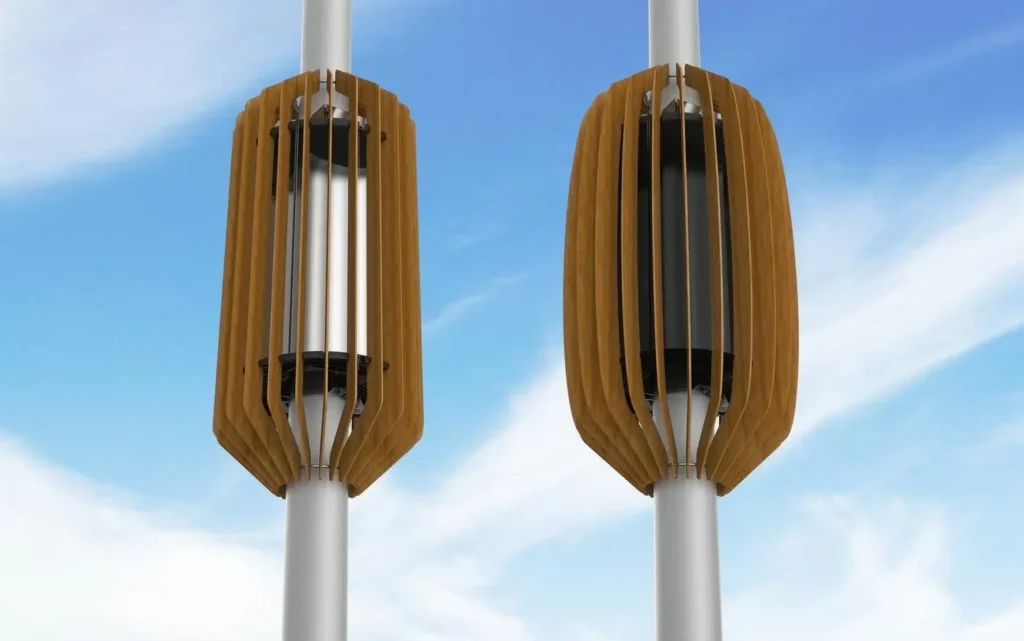
Mounted discreetly on traffic poles like a futuristic streetlamp accessory, this filterless electrostatic precipitator (ESP) vows to capture everything from PM0.1 dust motes to sneaky viruses and microplastics—all without fans, filters, or a whisper of ozone. It sips just 18 watts, equivalent to a dim bedside bulb, and claims to slash respiratory woes, boost life expectancy, and green the grid.
But peel back the glossy website rhetoric, and PAMARES reveals itself as a textbook case of overpromising under-delivery. Electrostatic precipitation isn’t snake oil—it’s a century-old industrial workhorse for scrubbing smokestacks. By God, I had studied about it way back in class 11th in 1973! Yet transplanting it to the wild, windy chaos of city streets? That’s where the fairy tale crumbles.
Peer-reviewed studies, EPA warnings, and a glaring void of real-world evidence dismantle PAMARES’ audacious assertions. What emerges isn’t innovation; it’s a costly distraction from the systemic overhauls our smog-sick cities desperately need. Buckle up: we’re about to electrify the truth.
Stripping PAMARES’ Bold Blueprint
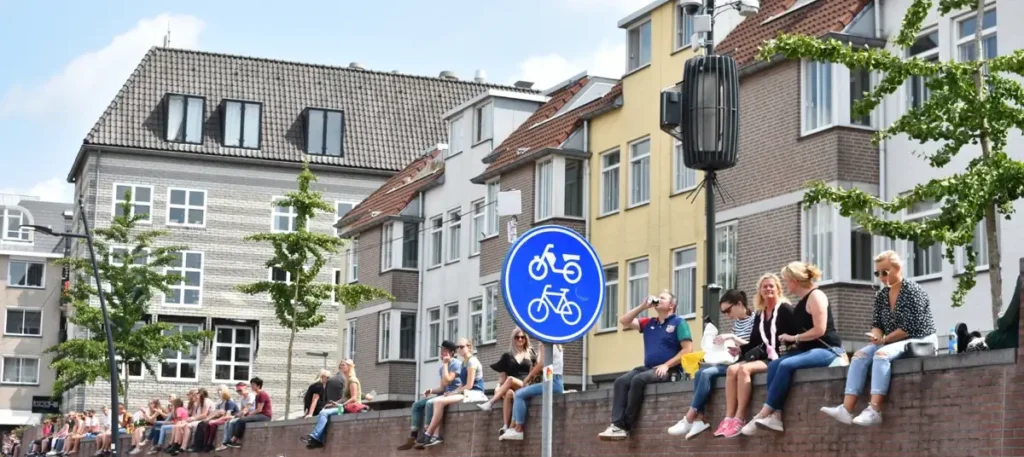
Picture this: a sleek, circular device, humming silently on a lamppost amid honking cars, autorickshaws and belching buses. According to Klenviron’s site, PAMARES wields high-voltage wizardry—a corona discharge from a charged wire that ionizes airborne villains, flinging them onto a grounded collector plate like iron filings to a magnet. No clunky fans to guzzle power or clog with grime; just passive attraction in an “electrostatic field” that allegedly blankets hotspots from bus stops to jogging tracks. The payoff? A whopping 45% slash in PM0.1 to PM10, those insidious specks infiltrating lungs and bloodstreams. PAMARES positions itself as a public good.
Deployment is a breeze: bolt it to existing poles, scatter across urban canyons, and voilà—smart cities, purified.
It’s seductive marketing, tailored to a nation where air quality indices routinely flirt with “hazardous” and governments scramble for quick fixes. But seduction often masks sleight of hand. PAMARES’ claims hinge on electrostatic precipitation’s proven prowess—yet ignore the chasm between controlled factory flues and capricious city breezes. Let’s dissect the device through science’s unforgiving lens, starting with the fundamentals.
Electrostatic Precipitation: Where It Works, and Why It Doesn’t Wander Far
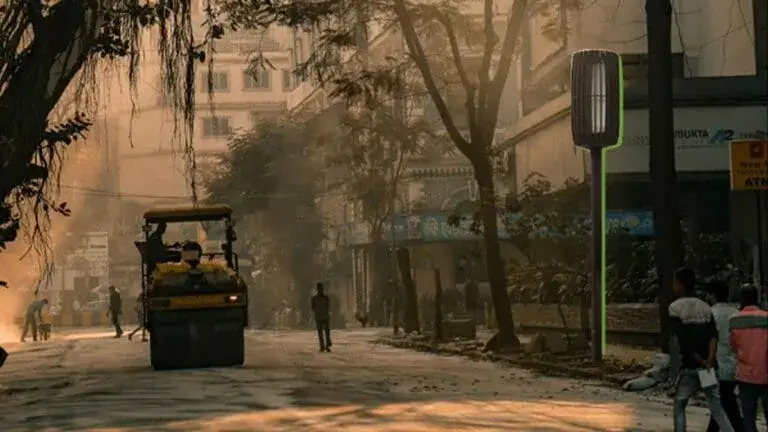
To grasp PAMARES’ folly, rewind to 1907, when Frederick Cottrell patented the first ESP for California’s oil refineries. The principle is elegantly simple: particles in a gas stream get zapped with ions from a high-voltage electrode, acquiring a charge that yanks them to oppositely charged plates. In industrial heartlands—like coal-fired power plants or steel mills—ESPs shine, routinely nabbing 99% of fly ash and soot from directed flue gases. Forced airflow ensures every mote passes through the electrified kill zone; collectors are washed or rapped clean, and the system hums at scale, curbing emissions that once blanketed valleys in toxic fog.
But here’s the rub: these triumphs demand containment. Flue gases are funnelled, velocities calibrated (typically 1-2 m/s), and volumes metered. Open the barn doors to ambient air, and physics revolts. Without ducts or blowers, how much air even encounters the field?
PAMARES bets on passive diffusion and ambient drift, but studies savage this naivety. A 2019 Aerosol and Air Quality Research experiment on wire-to-plate ESPs found charging efficiency craters without enforced flow—particles must linger milliseconds in the corona for ionization, a luxury wind-whipped streets rarely afford.
Enter urban entropy: Gusts at 5-10 m/s shear charged particles away before collection, diluting efficacy to “a fraction” of lab benchmarks. A Springer study on superhydrophobic-coated ESPs for ventilation intake noted open-air analogues struggle with “turbulent dispersion,” capturing under 20% beyond 1-2 meters.
PAMARES’ circular design might nudge this to 30-40% in a sweet spot, per user-provided caveats—but that’s proximity theatre, not city symphony.
Scale it to a junction: One unit guards a 5-meter radius bubble; the rest of the boulevard breathes unmolested. To dent a neighbourhood’s AQI? You’d need forests of these poles, ballooning costs and maintenance nightmares.
And maintenance? Industrial ESPs thrive on automated rappers or sprays; PAMARES touts “simple cleaning,” but field reports from analogous portable units paint drudgery—scraping baked-on crud risks re-aerosolizing toxins, sans the safety protocols of factories. Even mandated factory ESPs falter without vigilant upkeep, let alone street-side sentinels battered by rain and vandalism. PAMARES isn’t revolutionizing air; it’s retrofitting a smokestack relic for sidewalk photo-ops.
Wind, Walls, and Wasted Watts: The Open-Air Efficiency Evisceration
PAMARES’ forte—no fans—sounds eco-poetic, but it’s engineering arson. ESPs are airflow junkies; deprive them, and removal rates nosedive. A landmark 2022 Building and Environment paper modelled fanless ESPs in natural ventilation facades, finding PM2.5 capture at 15-25% in breezy simulations—paltry compared to ducted 70%+. Why? Charged particles follow field lines to plates, but ambient molecules collide en route, neutralizing charge via recombination. Residence time? Mere microseconds outdoors, versus seconds in streams.
Field trials, scarce as clean air days, corroborate the carnage. A 2023 MDPI hybrid ESP-soil filter study in simulated urban plumes hit 50% efficiency with mild induction—sans it, projections halved. Broader reviews in Science of the Total Environment (2023) tally portable cleaners’ outdoor-adjacent performance: 34-57% for PM10/2.5 in semi-enclosed spots, evaporating to <10% in gusts over 3 m/s. PAMARES’ 45%? Likely a lab-conjured cherry, measured in a still-air tent, not honking hellscapes.
Urban Scaling Amplifies the Absurdity
A city’s air volume dwarfs a single ESP’s grasp; even arrays falter without orchestration. Imagine Jaipur’s 44 lakh residents: To shave 1 microgram/cubic metre PM2.5 (a WHO interim goal), you will have to deploy thousands per square kilometre, per back-of-envelope math from EPA flue models adapted to ambient.
Costs? Astronomical—high-voltage innards aren’t cheap, and pole retrofits multiply. A 2021 Journal of Cleaner Production cost-benefit on urban interventions pegged ESP arrays at $500-1000/unit installed, with ROI vanishing beyond hotspots. PAMARES’ claims are based on “case studies” sans controls or comparators— in-house echo chambers, not science.
PAMARES nab PM but ignores NOx, SO2, VOCs—80% of urban toxicity cocktail. It’s a band-aid on a bullet wound, diverting from electrification or mass transit.
The Toxic Spark: Ozone’s Stealthy Sabotage
PAMARES’ “ozone-free” badge gleams brightest—and tarnishes fastest. Corona discharge, the device’s beating heart, inevitably births O3 via oxygen ionization: O2 + e- → O + O + e-, then O + O2 → O3. Manufacturers finesse with polarity tweaks or carbon electrodes, but zero-generation? Mythical.
EPA’s damning 2014 primer torches the illusion: Ionizers and ESPs “generate ozone as a by-product,” exceeding safe limits (0.05 ppm FDA; 0.08 ppm outdoor ambient) in occupied zones.
No federal nod for indoor use; outdoors, it wafts into breaths anyway. A 2016 Environmental Science & Technology field study in a Chinese office clocked an ESP spewing 29 mg/h O3, spiking supply air by 15 ppb and rooms by 3 ppb—tracking outdoor highs but amplifying lows, correlating with 22,000 extra particles/cm³ indoors when O3 breached 18 ppb. Occupancy buffered O3 but ballooned particles via shedding; extrapolate to streets, and pedestrians inhale the fallout.
Residential analogues fare worse. A 2014 ACS probe on in-duct ESPs for ultra-fines (4-15 nm) quantified surges: 0.5-2 ppb O3 per pass, compounding in recirculation. NIST’s 2008 trial raised indoor O3 six-fold over baselines, urging “caution” for health-vulnerable. Even a 2025 Journal of Electrostatics on carbon-brush ESPs admitted reductions but not elimination—durability traded for lingering traces.
Health toll? Brutal. O3 inflames airways, exacerbating asthma (25% attack risk hike per 20 ppb, per Lancet meta), throttling lung function by 10-20% in vulnerable kids. It oxidizes lipids, birthing aldehydes; reacts with terpenes for ultra-hazardous secondary organics. PAMARES’ “safe for humans, pets” flouts this—its 18W whisper belies the spark’s sting. In-house “ozone-free” tests? Unverified vaporware; no third-party audits surface in PubMed or Scopus sweeps.
Outdoors, dilution helps, but hotspots concentrate: Junction idlers, the elderly at bus halts—prime victims. A 2020 Sustainability review of ESP lit flagged ozone as the Achilles’ heel for non-industrial apps, with generation scaling voltage and humidity—Indian monsoons a perfect storm. PAMARES isn’t clean; it’s a covert polluter, trading visible dust for invisible poison.
Evidence Vacuum: The Peer-Reviewed Black Hole
An exhaustive hunt—PubMed, ScienceDirect, EPA dockets—yields zilch on filterless ESPs delivering population-level urban gains. Zilch on 45% sustained cuts in open-air deployments. Zilch attributing health metrics (fewer asthmatics, longer lives) to such gadgets.
Field voids abound. A 2023 Science of the Total Environment intervention roundup cited ESPs in poultry barns (95% PM slash, enclosed) but outdoor urban? Crickets. A HAL-archived 2022 aircraft cabin simulation projected ESPs for in-flight scrub but balked at ground-level turbulence. Broader: Environmental Health Perspectives (2016) modelled portable cleaners slashing indoor PM 50-60%, but outdoor translation? “Limited by dispersion,” with no city-scale RCTs.
This isn’t oversight; it’s indictment. Gold-standard studies demand controls, long-term monitoring, comparators—absent here. Contrast with robust urban trials: Beijing’s 2022 HEPA-tower experiment (enclosed, fanned) hit 20% local PM dips—but cost $1M/unit, far from PAMARES’ pole-plug.
A PMC urban policy review (2021) warned gadgetry distracts from upstream fixes—fuel standards, green belts—exacerbating divides. PAMARES isn’t evidence-based; it’s evidence-evading, a Startup India shiny object over substantive science.
Mirage of Wellness: Health Claims in the Haze
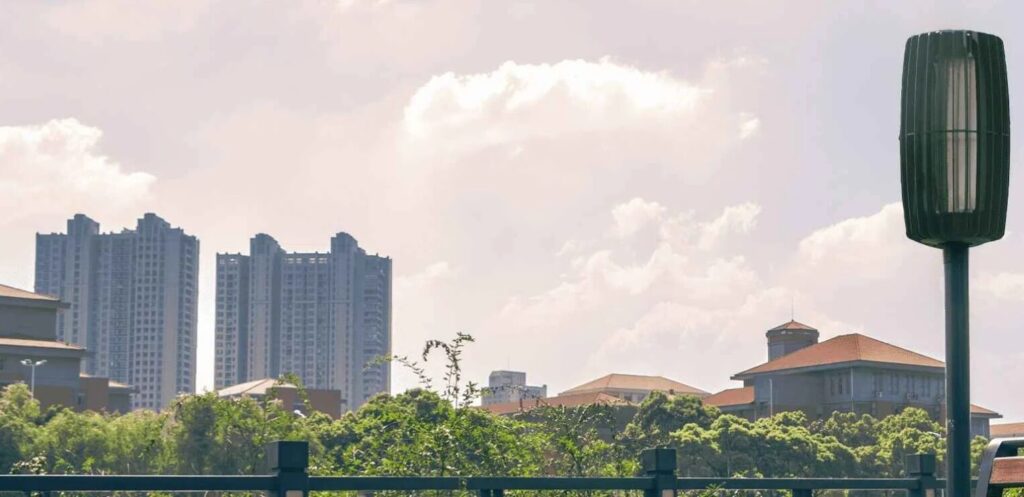
PAMARES drapes in white-coat allure: “Reduces respiratory issues, heart problems, reduced life expectancy.” Evocative, but evasive. PM links to 4.2 million premature deaths yearly (WHO), yes—but attribution to one pole-perch? Hubris.
Studies tether benefits to systemic drops: A 10 microgram/cubic metre PM2.5 cut yields 6% fewer strokes, per Harvard’s 2020 mega-analysis. PAMARES’ micro-zaps? Negligible. A PMC wildfire filter trial (2021) saw indoor PM halve with portables, trimming exposures—but outdoors, wind erased gains beyond rooms. Health modelling from ESPs? Sparse, and damning: Ozone co-emissions offset PM wins, netting neutral or worse for asthmatics.
PAMARES peddles hope, not healing—exploiting desperation while dodging due diligence.
Clearing the Air: Skepticism over Salesmanship
PAMARES isn’t malevolent; it’s misguided—a valiant swing at a Sisyphean boulder, felled by physics and paucity of proof. Electrostatic precipitation conquers chimneys, not crossroads; its outdoor exile exposes the emperor’s nudity. Ozone lurks, evidence evaporates, and scale slips through fingers like so much charged silt.
The Verdict
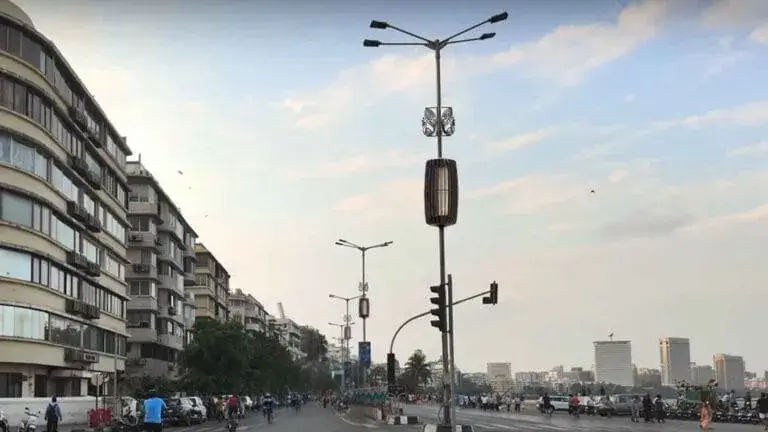
Remember one thing; complex problems demand complex solutions. Indians have the inveterate habit of looking for a magic bullet. Unfortunately, real-life is unforgiving. Scientific consensus remains skeptical of open-air ESP’s ability to effect transformative improvements in general urban air quality without major scale, coordinated deployment, and thoughtful urban design.
This thing is an outright hoax. What has happened is as follows:
- The government was keen on optics and gimmickry.
- The government was scammed into installing it.
- Or, it has itself embraced a scam in its sheer ignorance.
- The ignorance can, in turn, be traced to officials having no idea of the science of such things.
- The public is being fooled with such gimmickry.
- Pathetic state of affairs. It won’t help one bit.

